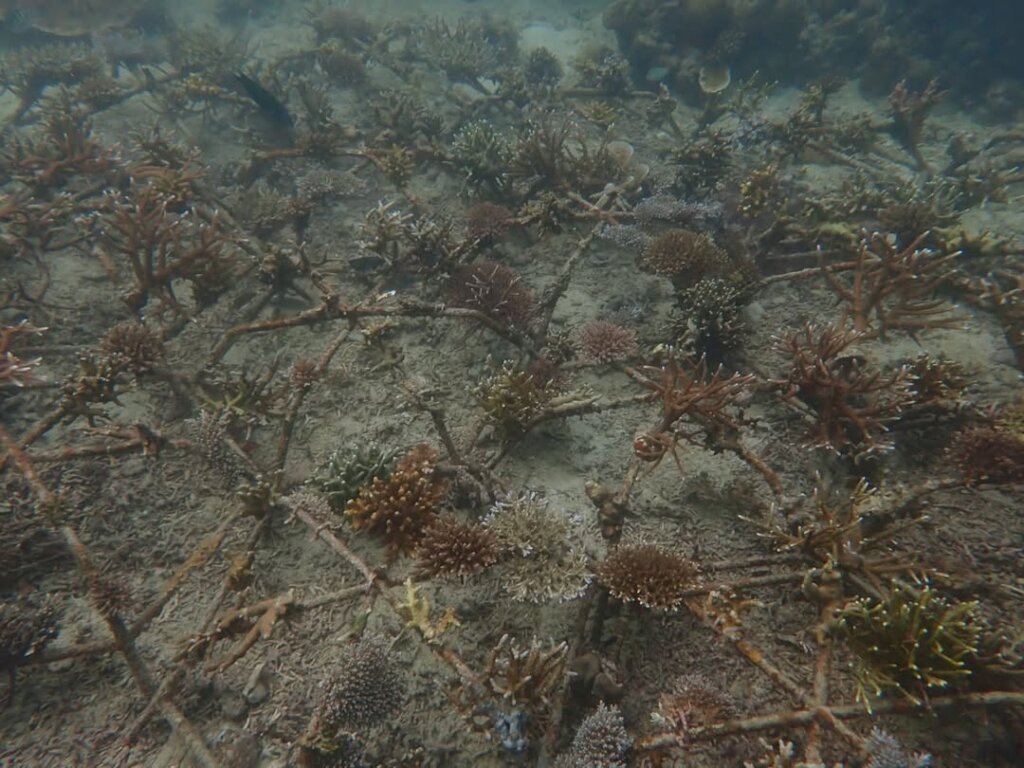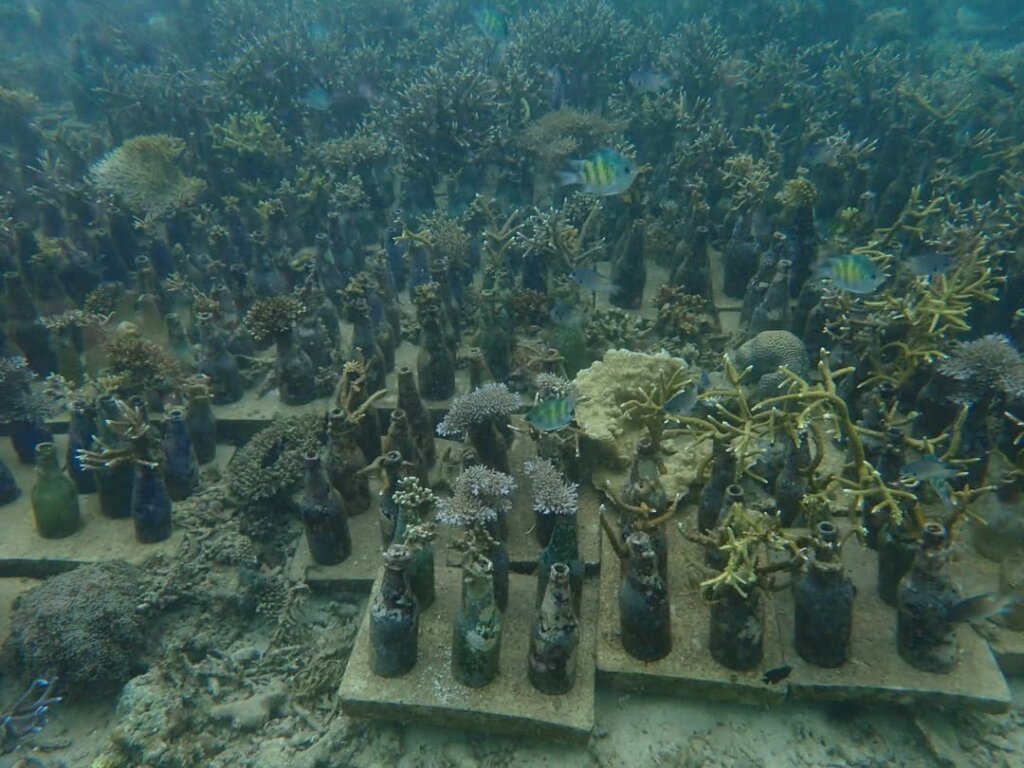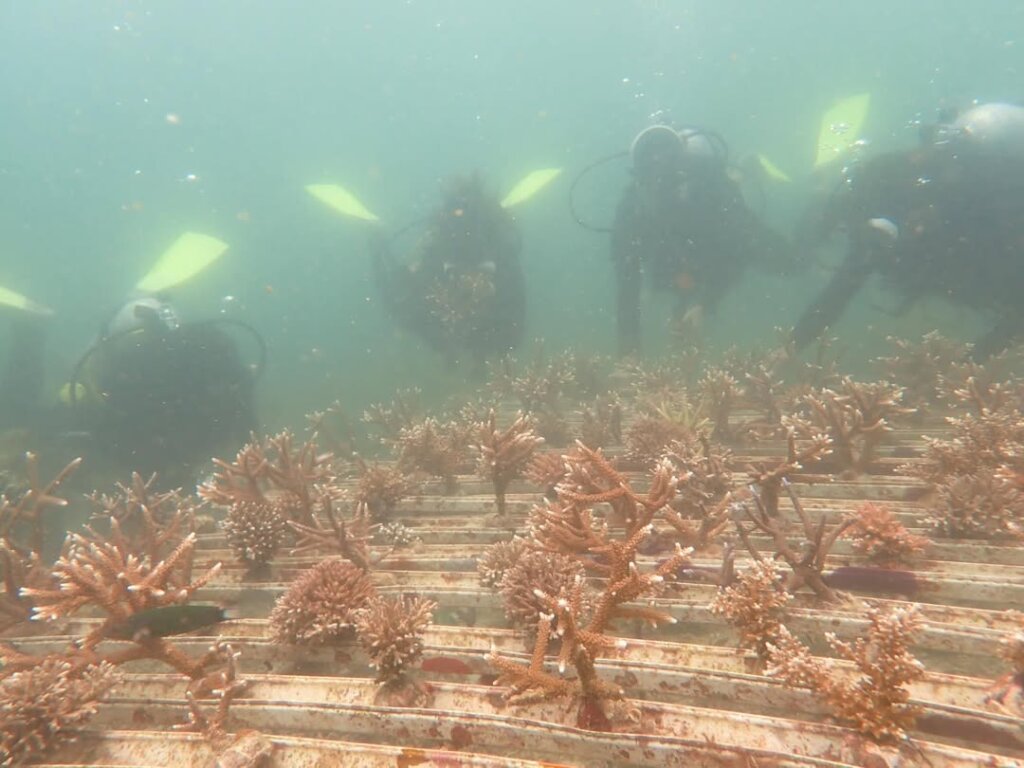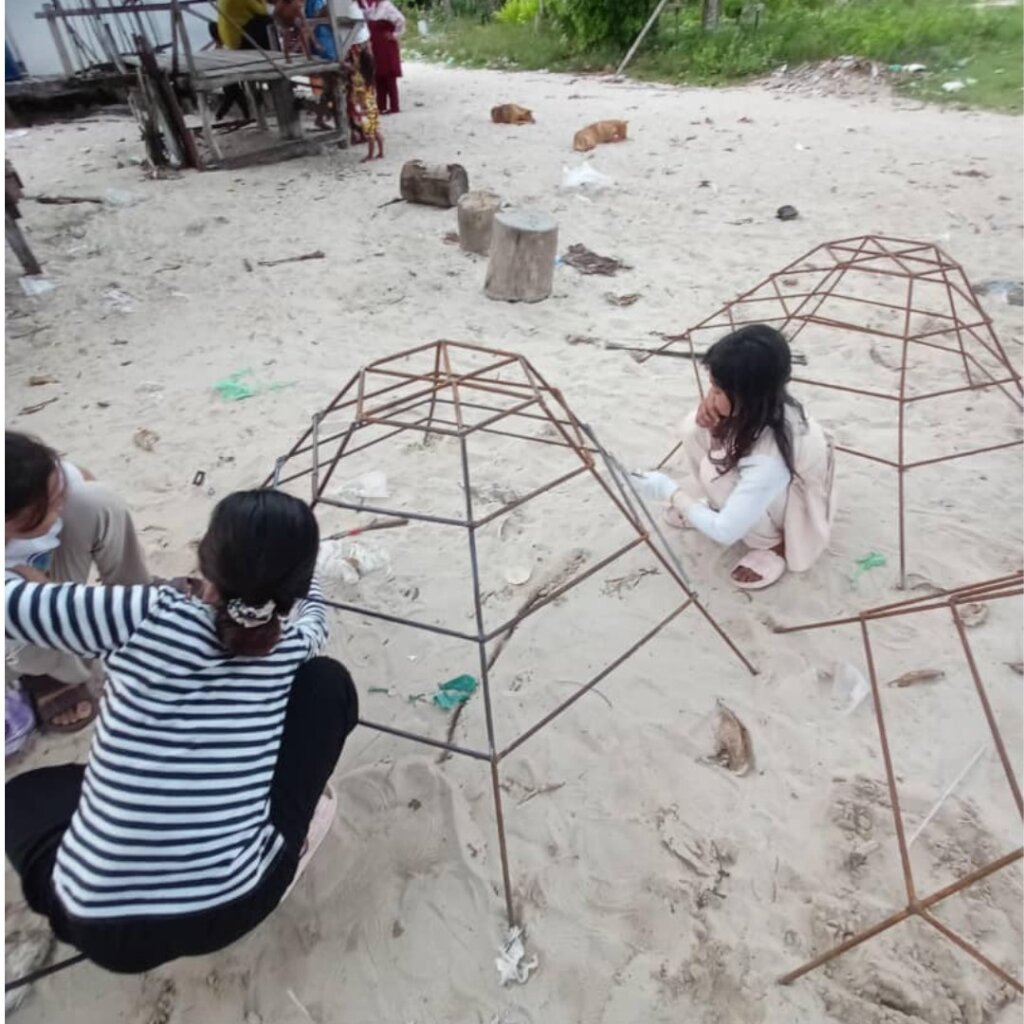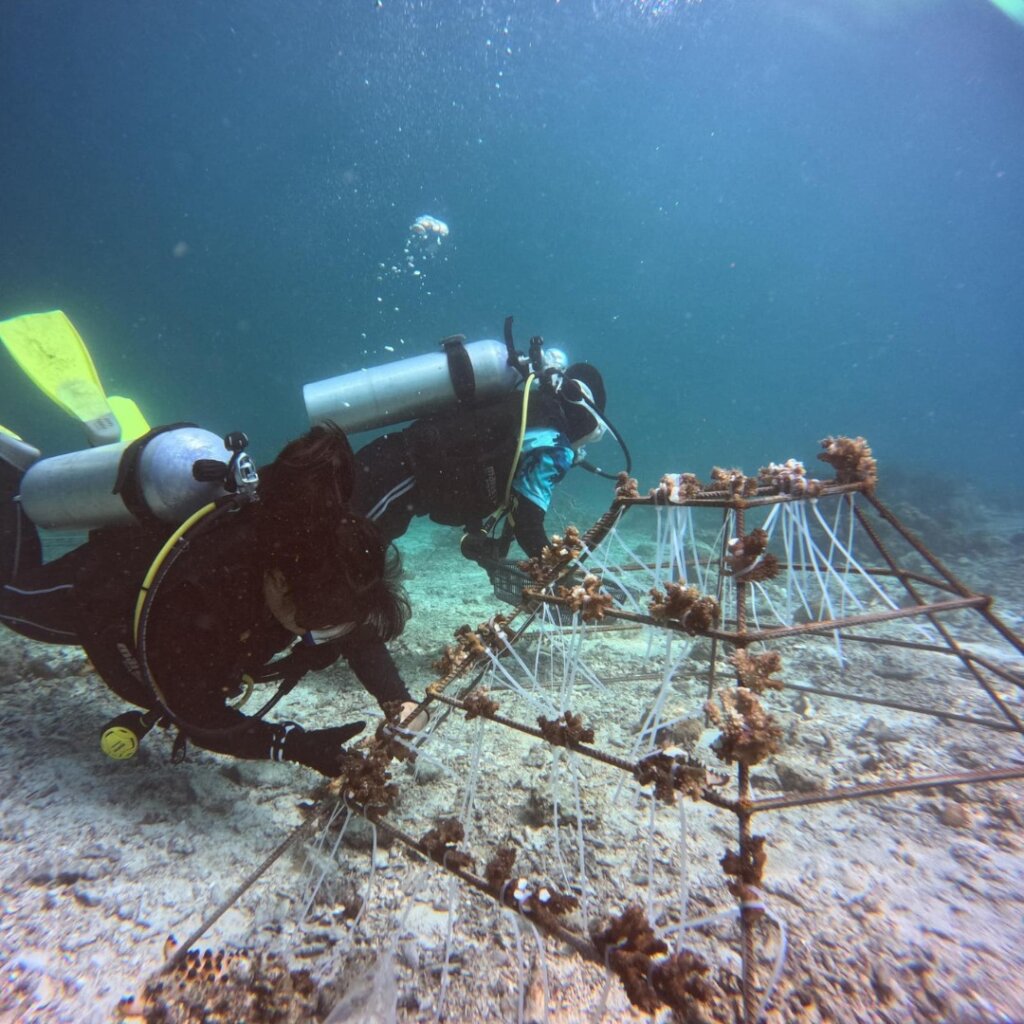By Cynthia | Education and Public Awareness Officer
Coral reefs are being damaged by human activities, which reduces their ability to provide things we need. One response to this is to rehabilitate coral reefs so that they return to their original condition, and continue to provide the things we need. How does this work? We identify damaged coral reef areas and re-grow corals by transplanting live coral from other areas. It is a complex, time-consuming and long-term effort, but experience shows that it can work.
Reef Check Malaysia has been conducting reef rehabilitation efforts in various locations across Malaysia for more than 10 years. We have also experimented with different methods and discovered what works best in each of these locations. RCM recognises the importance of local community participation in conservation and we have trained members of our Community Marine Conservation Groups (CMCGs) to conduct reef rehabilitation efforts and maintenance in their islands.
Recently, our Kulapuan Marine Conservation Group (KMCG) embarked on an exciting new journey in their coral rehabilitation program – using the spider frame method. They started with placing anti-rust coated frames in areas with extensive coral rubble. The team then carefully collected broken coral fragments and secured them to the frames with cable ties, giving them a second chance to grow. Previous methods employed in Kulapuan Island include the bottle reef and reef star methods. This effort was made even stronger with support from the Larapan Marine Conservation Group (LMCG) and Pemimpin Iklim Mabul.
Meanwhile, the reef rehabilitation nurseries managed by the Larapan Marine Conservation Group (LMCG) has been showing great progress. The team has been working hard to maintain the nurseries, ensuring the corals stay healthy and continue to grow! The white damsel fish (Tibuk Putih) has started nesting in some areas, and their nests are now covered with algae. Since these fish tend to "farm" algae, LMCG has been working extra hard to clear the overgrowth to prevent it from smothering the planted corals. They have also been clearing drupella snails from the sites, which tend to feed on live coral tissue.
These youth-led CMCGs are doing incredible work to protect their reefs! Collaboration between CMCGs not only strengthens conservation efforts but also builds a united front in restoring our oceans for the future.
NOTE: Reef Check Malaysia has also release a "Reef Rehabilitation Toolkit" which is available for download here.
Project reports on GlobalGiving are posted directly to globalgiving.org by Project Leaders as they are completed, generally every 3-4 months. To protect the integrity of these documents, GlobalGiving does not alter them; therefore you may find some language or formatting issues.
If you donate to this project or have donated to this project, you can receive an email when this project posts a report. You can also subscribe for reports without donating.
Support this important cause by creating a personalized fundraising page.
Start a Fundraiser